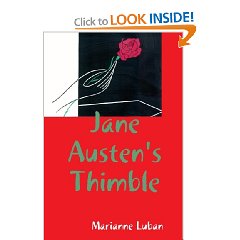This news is 2 years old but still interesting. Here is a report on Granville's Mummy, one that was unwrapped in the 19th Century:
http://www.ucl.ac.uk/news/news-articles/0910/09100104
and here is a contemporary report from a witness to the unwrapping, from a bit in the London Magazine:
http://tinyurl.com/78cfbvc
Granville found a tumor in the remains and figured the woman, Irtyersenu, had died of cancer, but the tumor was actually benign.
Tuesday, November 22, 2011
Thursday, November 17, 2011
From Nurses to Queens
In the winter of 2005 I published a piece in Britain's Ancient Egypt Magazine called "The Head-dress of Lady Rai". The point of the article was that the indentations on the forehead of a female mummy from the Deir el Bahari cache, named Rai, seemed to conform to the joins on a golden headdress of another [lost?] mummy, Satdjehuty, as depicted on her mask in the British Museum. The joins, as visible in a larger image, have been traced over in red by me to demonstrate just how they line up with the bottom of the head-dress. Here are the relevant images:
I no longer have a copy of my own article but, if I recall correctly, there were nurses of Queen Ahmose-Nefertari named Satdjehuty and Rai, the latter's coffin being in the Deir el Bahari cache but containing the corpse of Queen Inhapi. Rai's head-dress seems to have gone slightly askew but that of Inhapi slipped down so much onto her face that it crushed her nose and left a pattern of its rishi-feathers on her face. More about the mummy of "Rai", shown here, can be found on Max Miller's website at:
I also remember that, even while writing my piece for the magazine, I wondered how anyone knew the BM mask belonged to Satdjehuty as the visible inscription did not evidence such a name. Now I know the answer. The burial of Satdjehuty was discovered around 1820, according to Wiki, but how that is known eludes me. The lady, being a king's daughter, king's sister, and king's wife, seems to have been a consort of Seqenenre Tao II. Her nickname was "Satibu". Her mummy mask went to the British Museum but the remains of her wooden sarcophagus was acquired by Munich, where it was exhibited in 1999. That Satdjehuty was a queen is known from the Munich artifact. In 2005 I could find nothing indicating that the Satdjehuty of the BM mask was a queen and opinions fluctuated between "lady of the court" and "princess". Even now the BM website does not recognize this Satdjehuty as a queen.
http://www.britishmuseum.org/explore/highlights/highlight_objects/aes/m/mummy_mask_of_satdjehuty.aspx
But Wikipaedia indicates she is and I will try to investigate the matter further, although I think Wiki is correct. While the mask does not have a uraeus, the Munich sarcophagus head-dress, much the same, clearly once did:
I wrote in my article that what appeared to be golden head-dresses of ladies of the court were very queenly in appearance and now, of course, I know why. The Satdjehuty [which seems to have been a common name of the era] of the BM mask was no nurse or lady of the court--but a queen. A bandage, probably also in the BM, indicating a Satdjehuty as "a praised one of Ahmose-Nefertari" likely belonged to different lady and has been erroneously connected to the owner of the mask. The grandmother of Senenmut, great servant of Hatshepsut, was called Satdjehuty, too. Satdjehuty, the queen and sister-wife of Tao II, is also mentioned on the mummy-shroud of her daughter, Ahmes, who was buried in QV47 and is now in the Turin museum. [Dodson] The other wives of Tao II were Ahhotep and Inhapi.
Therefore, the mummy, supposedly named "Rai", can also not be a mere nurse but is surely a queen, as well. Now there is nothing known to be worn by ladies of the court that can have left the impression on the brow of the mummy--just the weighty golden crown of a king's wife. If you read about this mummy on Max Miller's site, you will have noticed that an inscription on a bandage was thought to say "Rai", but the other inscriptions were left vague in what Professor Eliott Smith had to say about these female remains in his book, "The Royal Mummies". A curious photo of one of the bandages along with some hair can be seen below, souvenirs of Smith in a frame. Scroll down and you will come to it here:
http://www.powerhousemuseum.com/collection/blog/index.php/tag/egyptian-gods/
Yes, indeed, a coffin of a nurse of Ahmose-Nefertari, belonging to "Rai", was certainly found in the cache but that the mummy, supposed to have been Rai, herself, all these years can be that lady is now very doubtful. An investigation into the matter should be conducted by the Cairo Egyptian Museum and the DNA of "Rai" could be compared with the mummies of other queens of the period. There is the coffin of a man named Paherypedjet, too, in which "Rai" was found, but what happened to him? His mummy does not appear to have been discovered among those in the cache. The BM mask was purchased in 1880 at Morten & Sons from the sale of the collection of Samuel Hull, of whom I know nothing. The mask is no more than 13 inches high. It does not make so very much sense that, if the nurse of Queen Ahmose-Nefertari, Rai, was going to be included by the reburial commission with the defunct royals of Egypt, that her coffin would be taken from her and used for Inhapi. Why not, then, just leave Rai in her own coffin and place Inhapi in that of Paherypedjet? It seems to me that the nurse was never deemed of sufficient rank to be included in the cache but lost her coffin to one royal lady and possibly even some of her bandages for the re-wrapping of another young queen.
http://www.britishmuseum.org/explore/highlights/highlight_objects/aes/m/mummy_mask_of_satdjehuty.aspx
But Wikipaedia indicates she is and I will try to investigate the matter further, although I think Wiki is correct. While the mask does not have a uraeus, the Munich sarcophagus head-dress, much the same, clearly once did:
Therefore, the mummy, supposedly named "Rai", can also not be a mere nurse but is surely a queen, as well. Now there is nothing known to be worn by ladies of the court that can have left the impression on the brow of the mummy--just the weighty golden crown of a king's wife. If you read about this mummy on Max Miller's site, you will have noticed that an inscription on a bandage was thought to say "Rai", but the other inscriptions were left vague in what Professor Eliott Smith had to say about these female remains in his book, "The Royal Mummies". A curious photo of one of the bandages along with some hair can be seen below, souvenirs of Smith in a frame. Scroll down and you will come to it here:
http://www.powerhousemuseum.com/collection/blog/index.php/tag/egyptian-gods/
Yes, indeed, a coffin of a nurse of Ahmose-Nefertari, belonging to "Rai", was certainly found in the cache but that the mummy, supposed to have been Rai, herself, all these years can be that lady is now very doubtful. An investigation into the matter should be conducted by the Cairo Egyptian Museum and the DNA of "Rai" could be compared with the mummies of other queens of the period. There is the coffin of a man named Paherypedjet, too, in which "Rai" was found, but what happened to him? His mummy does not appear to have been discovered among those in the cache. The BM mask was purchased in 1880 at Morten & Sons from the sale of the collection of Samuel Hull, of whom I know nothing. The mask is no more than 13 inches high. It does not make so very much sense that, if the nurse of Queen Ahmose-Nefertari, Rai, was going to be included by the reburial commission with the defunct royals of Egypt, that her coffin would be taken from her and used for Inhapi. Why not, then, just leave Rai in her own coffin and place Inhapi in that of Paherypedjet? It seems to me that the nurse was never deemed of sufficient rank to be included in the cache but lost her coffin to one royal lady and possibly even some of her bandages for the re-wrapping of another young queen.
Saturday, November 5, 2011
The Face of Tutankhamun
I have written it here and elsewhere that the best way to know how a king of Egypt really looked is to see his face as substituted for those of his servants and nobles. The above is supposed to be the head of a statue of Paramessu, a northern vizier of Tutankhamun who eventually became pharaoh as Ramesses I. Even though this stone face is less than perfectly intact, it is easy to see that it actually belongs to the boy-king Paramessu served. In these "substitution portraits", which were a very common way to show ones loyalty to the ruler in the New Kingdom, the artists did not bother to flatter the pharaoh nearly as much as they did in his own official images. Therefore, the above rendering of the young Tutankhamun is about as faithful a portrait as would have been made of him in antiquity and it compares very well to the face of his mummy. Notable are the almond eyes with their heavy lids and the thick lips that close with difficulty over the large, protruding front teeth. Click on the image for a larger view.
Subscribe to:
Comments (Atom)












